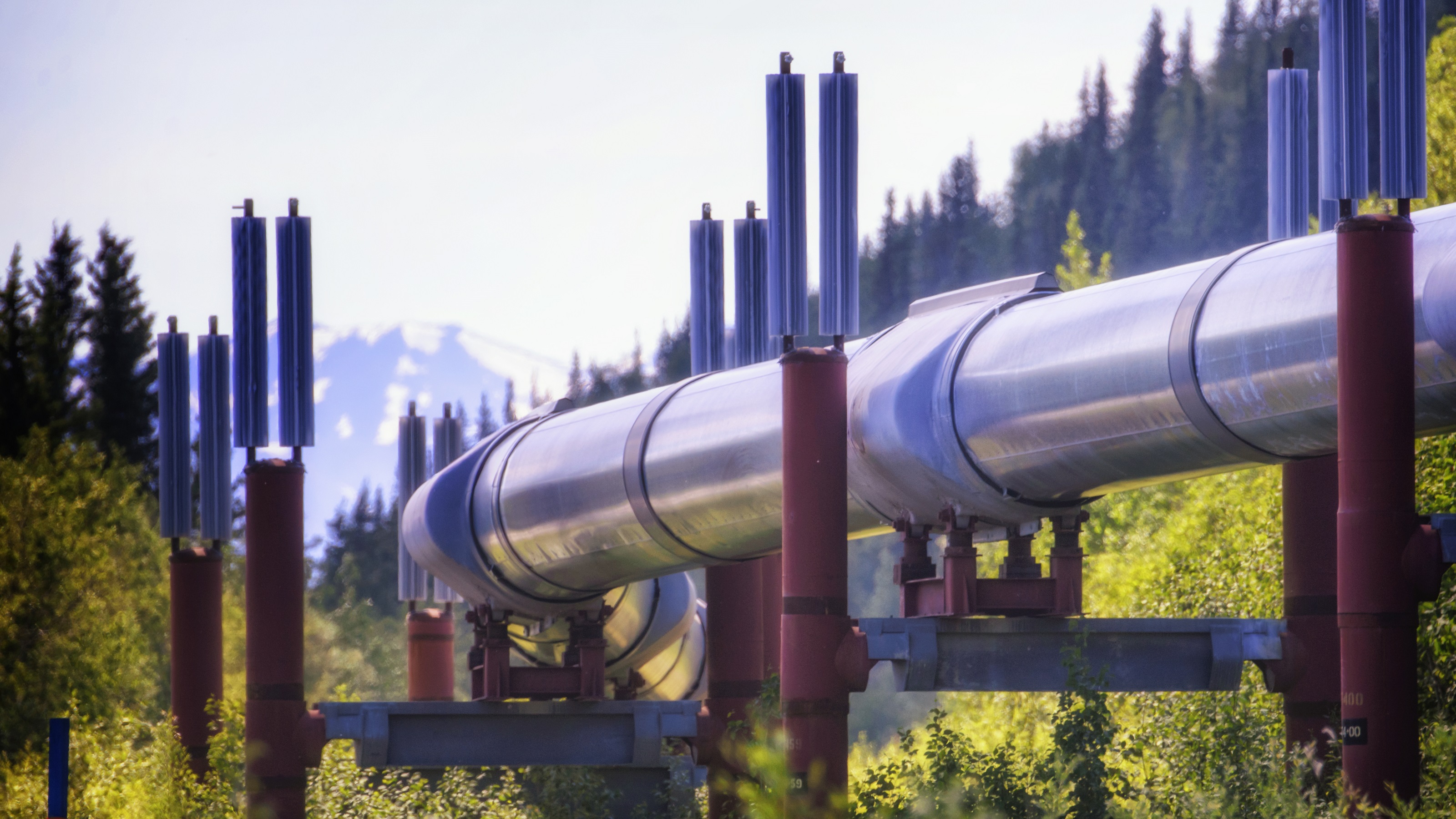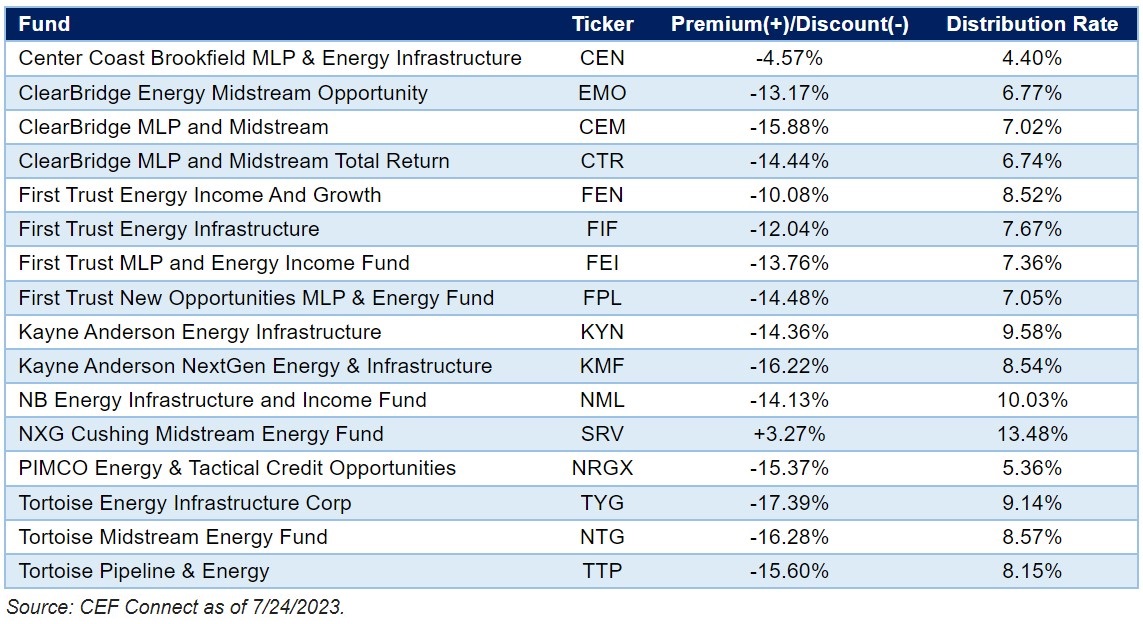These Energy ‘Middlemen’ Are an Income Lover’s Dream
Midstream energy companies, which connect producers and end users, service the industry itself, rather than being tied to commodity prices.


Investing in the energy sector has been quite a roller coaster. Energy was the worst performing S&P 500 sector in 2018. And 2019. And 2020.
But then it flipped. Energy was the top performing sector in both 2021 and 2022.
But in 2023, it’s back to its old ways — competing for last place with utilities.

Sign up for Kiplinger’s Free E-Newsletters
Profit and prosper with the best of expert advice on investing, taxes, retirement, personal finance and more - straight to your e-mail.
Profit and prosper with the best of expert advice - straight to your e-mail.
Energy returns are chronically trapped in the cycle of boom and bust because they’re tied to volatile oil and natural gas prices. So, what’s an investor to do who wants to invest in energy but also seeks steady and reliable income?
DON’T focus upstream. Energy exploration and production (E&P) companies engage at the beginning of the supply chain. They identify energy deposits, drill wells and recover raw materials from the ground. This segment of the industry is most directly tied to oil and gas prices, so their stocks typically experience the biggest swings.
DON’T focus downstream. Crude oil and natural gas refineries take raw products and turn them into products like gasoline and heating oil. These businesses face a different source of volatility: the price difference between raw energy (their input) and refined products (their output) can be wild and unpredictable.
DO focus midstream. All those hydrocarbons pouring out of the ground must get to the refiners somehow. That’s done by midstream companies. Their business involves transporting crude oil, natural gas and refined products across a vast network of pipelines, rails, barges and tankers — connecting producers to end users. They service the industry itself, rather than being tied to commodity prices.
Midstream companies are the “middlemen” of the energy business. They connect producers and end users. Owning a pipeline can resemble owning a toll bridge. Once a pipeline is built, the heavy lifting is done. You can then sit back and collect fees from those wanting to use the infrastructure you’ve put in place.
So why isn’t everyone “in” on the midstream companies? Well, some investors got burned during the U.S. shale boom of the last decade. During the rush to build out infrastructure, midstream companies prioritized growth over profitability. They took on projects with poor return prospects and paid for it in 2015. They’ve been out of favor with investors ever since.
It has largely gone unnoticed, but midstream companies are in much better shape today. They are steadily paying down the debt they took on to build infrastructure during the shale boom. The large, capital-intensive projects are largely complete, and now they’re prioritizing profits and shareholder returns.
What kind of returns do I mean? Many of the leading midstream companies like Enterprise Products (EPD), Kinder Morgan (KMI) and ONEOK (OKE) are paying dividends north of 6%. Compared to the S&P 500’s trailing 12-month yield of 1.58%, midstream companies are looking generous.
These pipelines have more going for them than nice dividends. They are well insulated from competition. Getting government approval for a new pipeline isn’t a slam dunk these days. That hinders growth. But it also keeps capital spending and potential new players in check.
That’s great for now, but how long will we really be using this infrastructure? Won’t it become obsolete as we transition to cleaner, greener energy sources?
Perhaps someday. But even forecasts that are incredibly optimistic about the clean energy transition still typically show demand for fossil fuels rising in the years ahead. Even more important, oil and especially natural gas are projected to be critical components of the global energy mix for decades to come.
If you’re thinking there must be a catch … you’re right. Many midstream companies are structured as master limited partnerships (MLPs). That means they issue K-1s, which can be a major headache when it comes to tax preparation.
If you’re interested in midstream companies but prefer to avoid the dreaded K-1, you have a few choices. There are some great midstream companies structured as C-corps. Or you can turn your attention to closed-end funds that specialize in energy MLPs. Instead of buying individual MLP stocks and dealing with the hassle of K-1s, you can own those same stocks through a closed-end fund and receive the simple and more familiar 1099 for your tax reporting.
You have plenty of choices — there are 16 midstream-focused closed-end funds listed today.

Those distribution rates should be juicy enough to get your attention, even in today’s interest rate environment where U.S. Treasury bonds actually yield something.
But what about the premium/discount? This feature is unique to closed-end funds. When you buy or sell a mutual fund, you do so at a price on par with the net asset value (NAV) of the fund.
Closed-end funds are different. Unlike mutual funds, closed-end funds don’t continually issue and redeem shares. You trade them with other investors. And they rarely trade at par. Sometimes they trade at a premium to the underlying asset value of the fund. Often, they trade at a discount.
All but one of the closed-end funds above trade at a discount today. That’s typically what happens when a fund specializes in part of the market that has fallen out of favor with investors. If you buy a fund at a 15% discount, you are essentially buying $1 of assets for 85 cents.
To recap: Midstream companies are resilient businesses not at the mercy of volatile commodity prices. They are reducing their debt, paying great dividends, and they’re insulated from competition. And if you own them through a closed-end fund, you avoid the K-1 hassle and get to buy these great assets on sale.
It’s an income lover’s dream. But no need to pinch yourself.
Get Kiplinger Today newsletter — free
Profit and prosper with the best of Kiplinger's advice on investing, taxes, retirement, personal finance and much more. Delivered daily. Enter your email in the box and click Sign Me Up.

Michael is a Portfolio Manager and Deputy Chief Investment Officer at SAM, a Registered Investment Advisor with the United States Securities and Exchange Commission. File number: 801-107061. He sources investment opportunities and conducts ongoing due diligence across SAM’s portfolios. Michael co-manages SAM’s Income and Tactical Select strategies. Prior to joining SAM, Michael worked with high-net-worth private clients for the largest independent wealth management firm in the United States. He was also a senior analyst for one of the largest investment-grade bond managers in America. Michael joined SAM in 2017.
-
 6 Stunning Waterfront Homes for Sale Around the US
6 Stunning Waterfront Homes for Sale Around the USFrom private peninsulas to lakes, bayous and beyond, Kiplinger's "Listed" series brings you another selection of dream homes for sale on the waterfront.
By Charlotte Gorbold Published
-
 Six Reasons to Disinherit Someone and How to Do It
Six Reasons to Disinherit Someone and How to Do ItWhether you're navigating a second marriage, dealing with an estranged relative or leaving your assets to charity, there are reasons to disinherit someone. Here's how.
By Donna LeValley Published
-
 Should You Still Wait Until 70 to Claim Social Security?
Should You Still Wait Until 70 to Claim Social Security?Delaying Social Security until age 70 will increase your benefits. But with shortages ahead, and talk of cuts, is there a case for claiming sooner?
By Evan T. Beach, CFP®, AWMA® Published
-
 Retirement Planning for Couples: How to Plan to Be So Happy Together
Retirement Planning for Couples: How to Plan to Be So Happy TogetherPlanning for retirement as a couple is a team sport that takes open communication, thoughtful planning and a solid financial strategy.
By Andrew Rosen, CFP®, CEP Published
-
 Market Turmoil: What History Tells Us About Current Volatility
Market Turmoil: What History Tells Us About Current VolatilityThis up-and-down uncertainty is nerve-racking, but a look back at previous downturns shows that the markets are resilient. Here's how to ride out the turmoil.
By Michael Aloi, CFP® Published
-
 Home Insurance: How to Cut Costs Without Losing Coverage
Home Insurance: How to Cut Costs Without Losing CoverageNatural disasters are causing home insurance premiums to soar, but don't risk dropping your coverage completely when there are ways to keep costs down.
By Jared Elson, Investment Adviser Published
-
 Markets Roller Coaster: Resist the Urge to Make Big Changes
Markets Roller Coaster: Resist the Urge to Make Big ChangesYou could do more harm than good if you react emotionally to volatility. Instead, consider tax-loss harvesting, Roth conversions and how to plan for next time.
By Frank J. Legan Published
-
 Why Homeowners Insurance Has Gotten So Very Expensive
Why Homeowners Insurance Has Gotten So Very ExpensiveThe home insurance industry is seeing more frequent and bigger claims because of weather, wildfires and other natural disasters.
By Karl Susman, CPCU, LUTCF, CIC, CSFP, CFS, CPIA, AAI-M, PLCS Published
-
 Going Through Probate? How to Find the Right Attorney
Going Through Probate? How to Find the Right AttorneyJust having the skills and experience to do the job isn't enough. The probate attorney you hire needs to have the right temperament for your particular case.
By John R. Silva, Esq. Published
-
 Widow's Penalty: Three Ways to Protect Your Finances
Widow's Penalty: Three Ways to Protect Your FinancesHigher Medicare premiums, smaller Social Security payments, bigger tax bills … Financial changes can hit hard when a spouse dies. How to counter the blow.
By Ashley Terrell, IAR Published